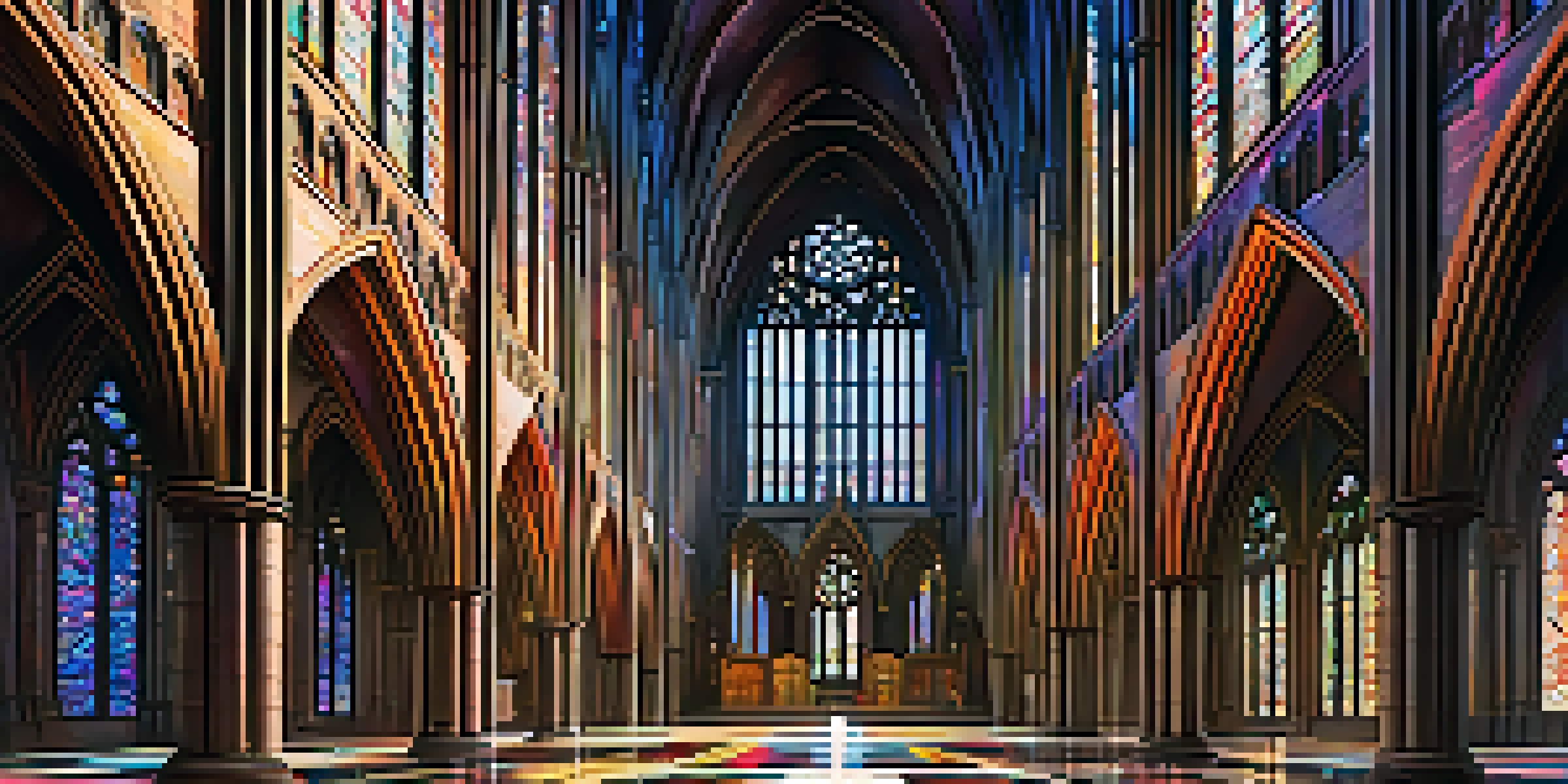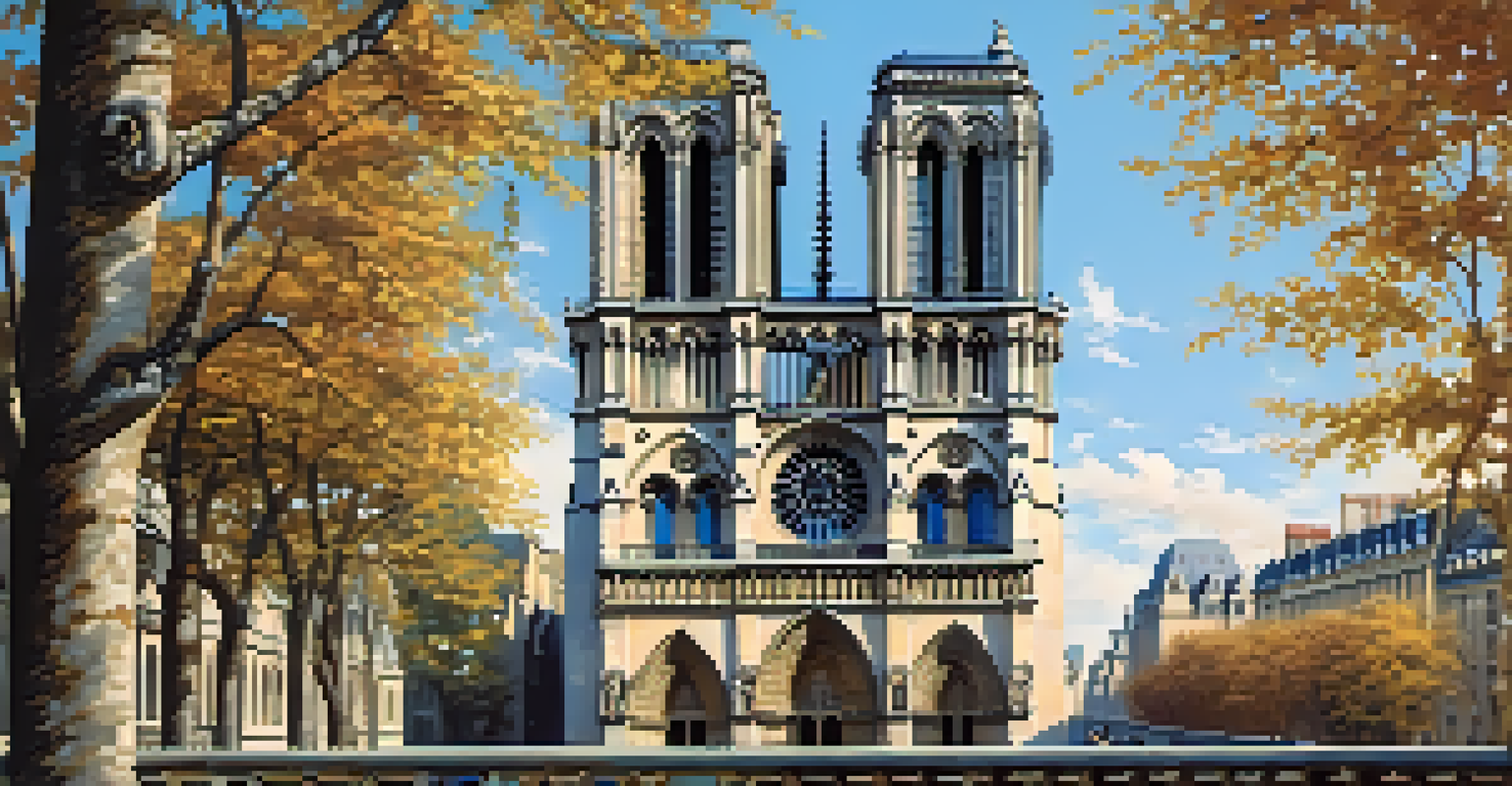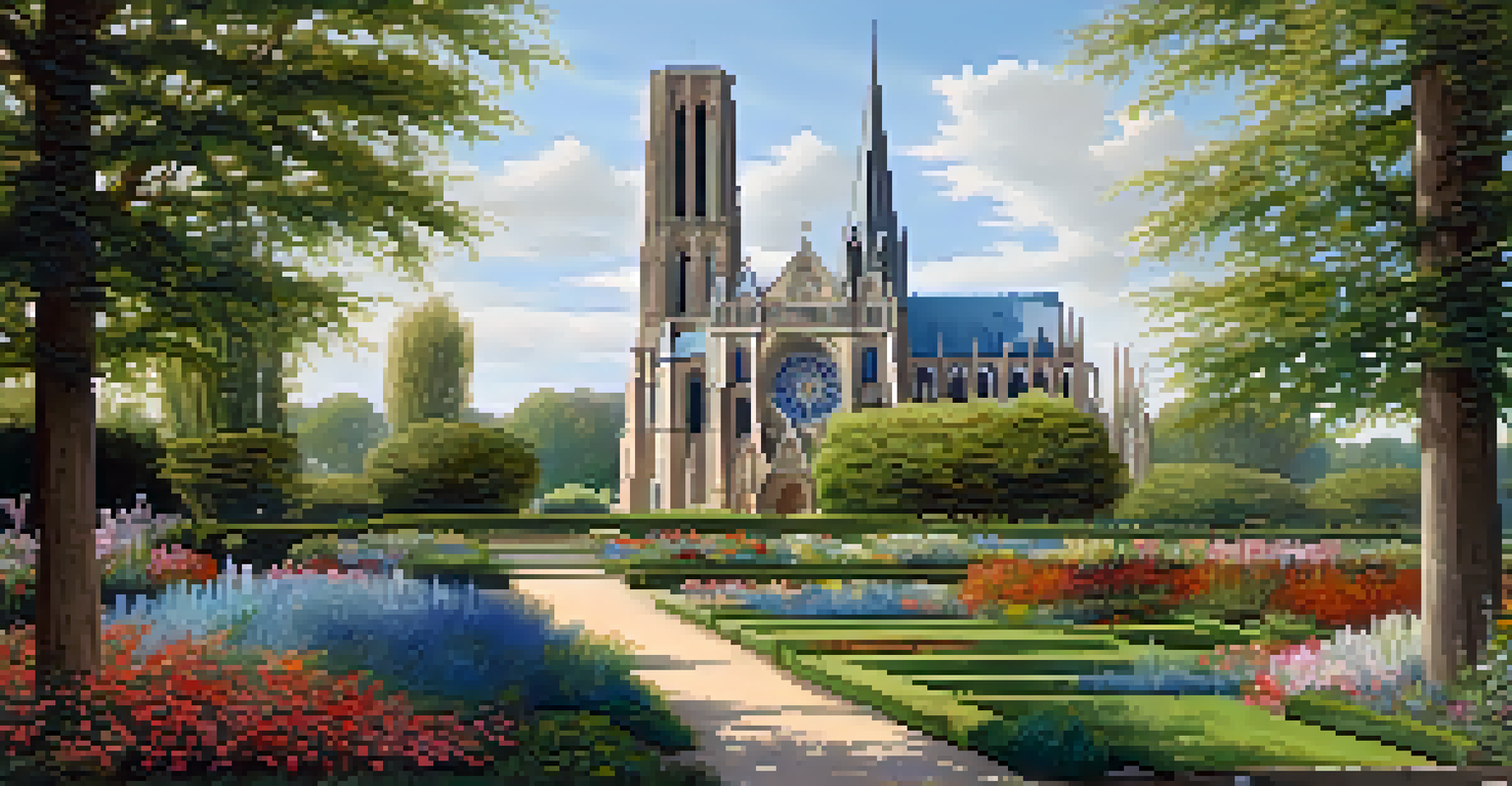Gothic Architecture: The Artistry of Vertical Design

What is Gothic Architecture? An Overview
Gothic architecture emerged in the 12th century and flourished until the 16th century, primarily in Europe. Known for its striking verticality and light-filled interiors, this style marked a departure from the heavier Romanesque buildings that preceded it. Characterized by features like pointed arches, ribbed vaults, and flying buttresses, Gothic architecture aimed to reach for the heavens, both literally and figuratively.
Architecture is the art of how to waste space.
The movement began in France, with the notable Basilica of Saint-Denis often credited as the first true Gothic structure. As architects sought to create grander and more elaborate structures, the style spread across Europe, influencing cathedrals and churches in England, Germany, and beyond. This architectural evolution not only transformed the skyline of cities but also reflected the societal and religious aspirations of the time.
Gothic architecture is often associated with the grandeur of cathedrals, but it also encompasses various secular buildings. The intricate designs and innovations of this style were not just about aesthetics; they represented a new way of thinking about space, light, and the divine. Today, many of these structures stand as testaments to human creativity and the enduring power of architectural artistry.
Key Features of Gothic Architecture Explained
One of the most recognizable features of Gothic architecture is the pointed arch, which was not just for show. This design allowed builders to create taller and more stable structures, distributing weight more effectively than the rounded arches of previous styles. The result was a soaring, ethereal feel to Gothic cathedrals, drawing the eye upward and inspiring awe in those who entered.

Another hallmark of this style is the ribbed vault, which enabled architects to span larger spaces without relying on solid walls. This innovation provided not only structural support but also an opportunity for more intricate ceiling designs. When combined with flying buttresses—external supports that allowed for thinner walls—these features created a sense of lightness and space that was revolutionary for the time.
Gothic Architecture's Key Features
Gothic architecture is characterized by its pointed arches, ribbed vaults, and flying buttresses, which allowed for taller, lighter structures that transformed the architectural landscape.
Stained glass windows are yet another iconic element of Gothic architecture. These colorful artworks not only illuminated the interiors but also told biblical stories, serving both aesthetic and educational purposes. The interplay of light and color through these windows added a mystical quality to the worship experience, reinforcing the idea that the divine was present in every corner of these majestic buildings.
The Role of Light in Gothic Cathedrals
Light played a pivotal role in Gothic architecture, transforming how spaces were perceived. With the introduction of large stained glass windows, architects maximized natural light, creating an almost celestial atmosphere within cathedrals. This emphasis on light symbolized the divine, inviting worshippers to feel a closer connection to God.
A building is not just a place to be. It should be a place to become.
The interplay of light and shadow also added depth and drama to the interiors. As sunlight streamed through the colored glass, it cast vibrant patterns on stone walls, enhancing the overall spiritual experience. Architects meticulously planned the placement of these windows to ensure that the light would highlight key areas, such as altars and shrines.
Moreover, the use of light was not limited to the interiors. Externally, the way buildings caught the light at different times of the day added to their majestic appearance. This intentional design element contributed to the overall verticality of Gothic structures, making them appear even more grand and ethereal against the sky.
Iconic Examples: Notre-Dame and Chartres Cathedral
Notre-Dame de Paris stands as a quintessential example of Gothic architecture, showcasing many of the style's defining features. From its flying buttresses to its stunning rose windows, every aspect of Notre-Dame reflects the artistry and ambition of its creators. The cathedral has not only been a place of worship but also a symbol of French history and culture.
Chartres Cathedral, another iconic Gothic structure, is renowned for its incredible stained glass and well-preserved architecture. Its unique blend of blue tones in the windows, known as 'Chartres blue,' has captivated visitors for centuries. The cathedral's labyrinth, a meditative path for pilgrims, further emphasizes the spiritual journey that Gothic architecture sought to embody.
The Importance of Light
Light played a crucial role in Gothic cathedrals, with large stained glass windows creating a celestial atmosphere that symbolized the divine and enhanced the spiritual experience.
Both cathedrals illustrate the regional variations within the Gothic style, showing how local influences shaped design choices. These masterpieces continue to attract millions of visitors each year, reminding us of the creativity and dedication that went into their construction. Their enduring beauty speaks volumes about the timeless appeal of Gothic architecture.
Gothic Revival: A Return to Vertical Design
The Gothic Revival movement of the 19th century marked a resurgence of interest in this architectural style. Spurred by a romanticized view of the Middle Ages, architects sought to recreate the grandeur of Gothic structures. This revival was characterized by the same vertical elements, pointed arches, and intricate details that defined the original style.
One notable example of this movement is the Palace of Westminster in London, with its iconic clock tower, famously known as Big Ben. This structure embodies the Gothic Revival's emphasis on verticality and ornate design, blending traditional Gothic elements with modern functionality. Such buildings reflect a societal yearning to connect with the past while embracing contemporary needs.
The Gothic Revival extended beyond religious buildings, influencing universities, libraries, and even private homes. This eclectic mix of old and new not only enriched the architectural landscape but also sparked a broader appreciation for historical styles. Today, many Gothic Revival buildings stand proudly, showcasing the enduring legacy of vertical design.
The Symbolism of Verticality in Gothic Architecture
Verticality in Gothic architecture is more than just an aesthetic choice; it carries deep symbolic significance. The soaring structures were designed to draw the eye—and the spirit—upward, towards the heavens. This aspiration reflected the medieval belief that reaching towards God was essential to the faith experience, embodying the connection between the earthly and the divine.
In many ways, the vertical lines of Gothic buildings symbolize the human desire for aspiration and transcendence. Just as the architects reached for the sky, so too did the people of that era aspire for spiritual enlightenment and connection. The grand scale of these structures encouraged worshippers to reflect on their place within the universe, fostering a sense of humility and reverence.
Preservation of Gothic Heritage
Efforts to preserve Gothic architecture are essential for maintaining these historic structures, as they embody cultural identity and artistic achievement that inspire future generations.
Furthermore, the intricate details found in Gothic architecture served as a reminder of the divine craftsmanship that went into creation. From gargoyles to ornate carvings, every element tells a story of faith, artistry, and community effort. This intricate interplay of verticality and symbolism continues to resonate, inviting new generations to explore the rich history of Gothic architecture.
Preserving Gothic Architecture for Future Generations
As we admire the beauty of Gothic architecture, it's crucial to consider the challenges of preservation. Many of these historic structures have faced the test of time, weather, and even human intervention. Conservation efforts are vital to maintain the integrity of these iconic buildings, ensuring they continue to inspire future generations.
Modern technology has played a significant role in restoration efforts, allowing experts to analyze and repair damage without compromising the original design. Advances in materials and techniques enable restorers to replicate the intricate details that define Gothic structures. This blend of tradition and innovation is essential for preserving the artistry that has captivated audiences for centuries.

Beyond technical challenges, there is also a growing awareness of the cultural importance of these buildings. Communities are rallying to protect their local Gothic structures, recognizing them as symbols of shared history and identity. By fostering appreciation and understanding of Gothic architecture, we can ensure that these masterpieces of vertical design remain a part of our cultural heritage.